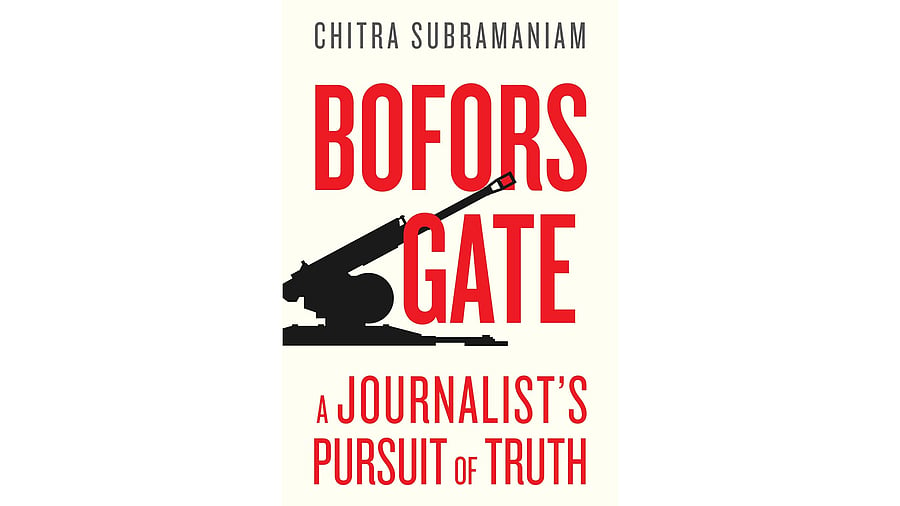
Bofors gate
Credit: Special arrangement
The Indian Army’s 1986 purchase of howitzer guns from Bofors AB, Sweden, was its largest acquisition at the time. However, the military significance of the deal was buried in the political fallout. Bofors has since been inscribed in India’s political history by the journalistic effort of revealing many tracks of payoffs behind the deal.
Nothing before or since has matched the scope of the media investigation into the scandal, called ‘Bofors gate’ in an avoidably cliched reference by the reporter most closely involved in it. Chitra Subramaniam’s memoir is invaluable, suffused with all the pain, frustration and exhilaration that are part of great journalism.
Subramaniam had just begun life in Geneva with her Swiss husband when the story of the Bofors payoffs exploded in April 1987. The months following, when she began her pursuit, were a time of escalating demands from the two Indian newspapers she was a stringer for. She opened multiple leads and ran into several dead ends, but succeeded in finding three sources who helped her lay bare every trace of the payoffs.
We get a description of a journalist’s investigative routines: endless hours spent in company registries to locate some link to the suspects and the constant vigil against stories planted by interested parties. The thumb rule Subramaniam adopted, of potential value for the dying art of investigative journalism, was to verify every detail with at least two sources unknown to each other.
It was a time of tortured choices, both professional and personal. And inevitably, the threats were not long in coming, against her and her infant son, in anonymous calls from India.
The Hinduja brothers — GP, SP and Prakash — were identified very early on by the street as possible recipients and conduits of the payoffs. The youngest of them, Prakash, was based in Geneva and constantly buzzing in Subramaniam’s ears.
Alongside the efforts to mislead, Subramaniam had to deal constantly with the blandishments the Hindujas offered: invitations to their social soirees, offers to set up interviews with the rich and powerful. Among the unintended consequences of the Hindujas’ efforts at distraction was a vital lead: when a fictitious company fostered to mislead was found, through a chain of linkages, to lead to the address from where an invitation to a Hinduja family wedding had been issued.
Subramaniam’s revelations of an uncomfortable working relationship with the then editor of the newspaper she was writing for go back to a book of roughly the same length published in 1993 (Bofors, The Story Behind the News). What the current volume adds is not immediately clear.
The book claims, both in the brief author description on the jacket and towards the end of its narration, that Subramaniam’s investigations were singularly responsible for the fall of the Rajiv Gandhi government in 1989. This premise needs some scrutiny. The Congress in 1989 went from its highest-ever seat tally in the Lok Sabha to its second lowest (at the time). But it still won close to 40 percent of the vote across the country, just 6 points below its share in 1984. And its tally in the four southern states increased substantially: from 84 seats to 122 (out of a total of 129).
The south of India is where English newspaper readership was high, and it was also here that the principal media vehicle for the Bofors revelations had maximum diffusion. Single-cause explanations seldom work with Indian elections. The political fallout of Bofors, if any, was more complex. The journalistic effort forced the official hand, and its moment of triumph came in 1997 when India obtained the entire cache of Swiss bank documents detailing the payoffs.
A case was registered and went to trial, only to be put on fast track towards self-destruction by the Delhi High Court in February 2004. In May 2005, the same court administered the last rites. The burial of the prosecution was in the shared interests of both the Bharatiya Janata Party-led coalition that held power in 2004 and the Congress which came afterwards. That was testimony perhaps to the cross-partisan influence of the recipients of the payoffs.
Subramaniam’s principal source, referred to as “Sting” throughout the book, shed his anonymity in 2012 and revealed himself as Sten Lindstrom, head of the Swedish police through the crucial years. In an interview reproduced as postscript to this book, he explained that the 25-year mark since the scandal broke was a good time to go public. He also spoke of his worry that “corruption levels” in the world were increasing: “There is new business around corruption with companies selling products that measure corruption instead of questioning why it is there in the first place”.
That perhaps is the most apt conclusion to the Bofors story: an opportunity missed to enforce probity and accountability in public life.
The reviewer is an independent writer and researcher based in Delhi.